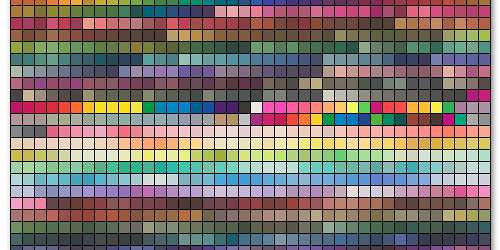
Ink color options and combinations are endless, so special attention must be paid to mixing and matching inks. Ink color density directly affects color outcome, and careful measurement of both density and color are necessary to achieve desired results. Image Source: Flickr CC user ben [deleted]
My years in the printing industry taught me one thing—color matters. But when you’re working with ink, color matching is a challenge, especially if you have high standards. Ink color density plays an important role for in-line color printing and has a direct effect on color uniformity and final outcome. Color density measurement can be achieved in several ways, of course, but spectrophotometers are the most versatile option for advanced control and quality.
Many major print media and label corporations are unaware of their options—or the capabilities of spectrophotometric instrumentation. As product supplies and industry needs continue to change, new innovations in spectral technology are keeping pace. And since challenges in ink color density measurement can affect many areas of product development, instrumental analysis is a key method of staying competitive in a growing market.




